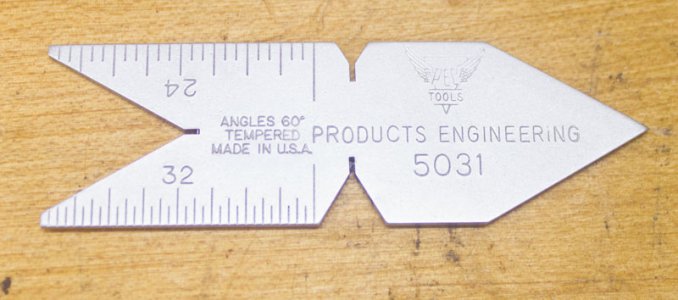- Joined
- May 13, 2019
- Messages
- 1,016
So, I've been doing a fair amount of threading on my lathe and I'm starting to get pretty good at it. A question came into mind and I'm not sure what the answer is. Maybe someone here can answer it.
Like most, I use a center gauge like the one pictured below to get my lathe tool at exactly perpendicular to the work. I spend a fair amount of time making sure the lathe threading tool is correctly set so that the 60 degree included angle is perfect.
But, how accurate does this need to be? Can it be off 1/2 degree? 1 degree? More? Am wasting my time trying to get it as perfect as I can get it when it can be off a few degrees?

Like most, I use a center gauge like the one pictured below to get my lathe tool at exactly perpendicular to the work. I spend a fair amount of time making sure the lathe threading tool is correctly set so that the 60 degree included angle is perfect.
But, how accurate does this need to be? Can it be off 1/2 degree? 1 degree? More? Am wasting my time trying to get it as perfect as I can get it when it can be off a few degrees?


